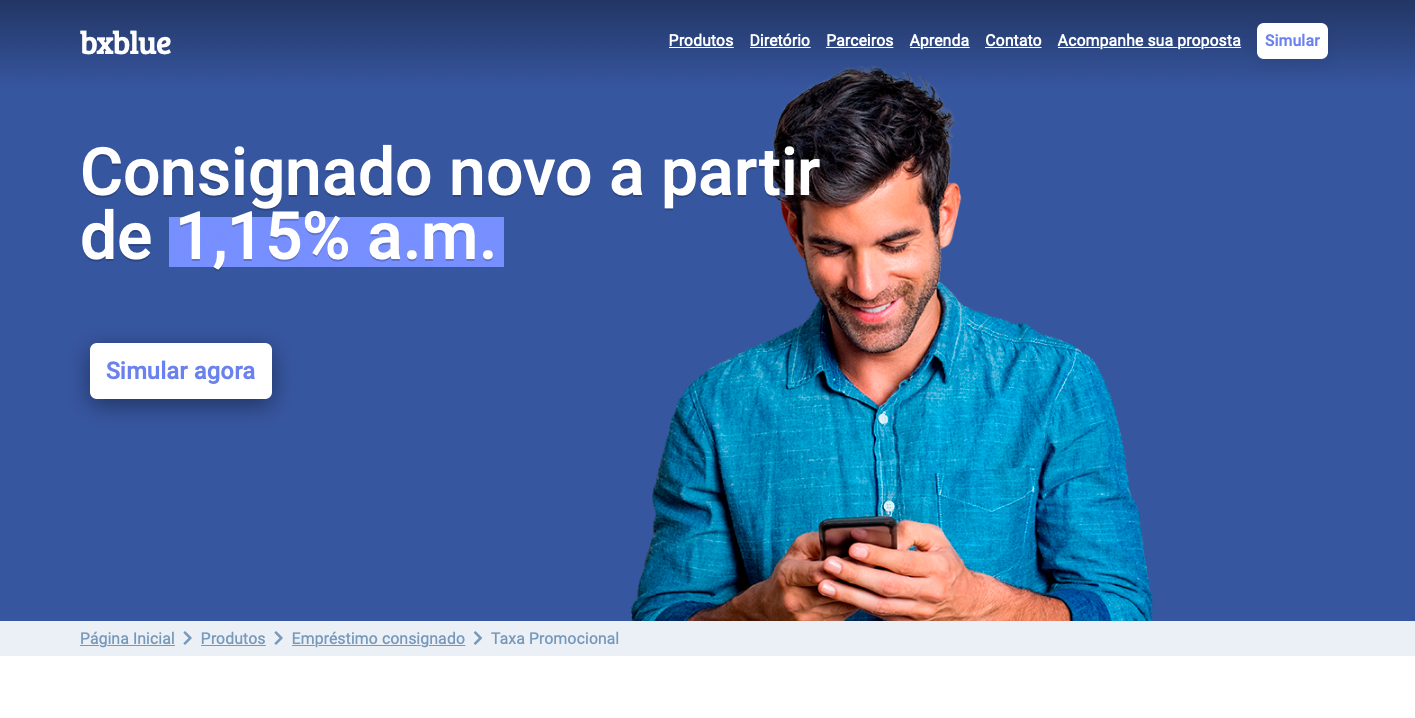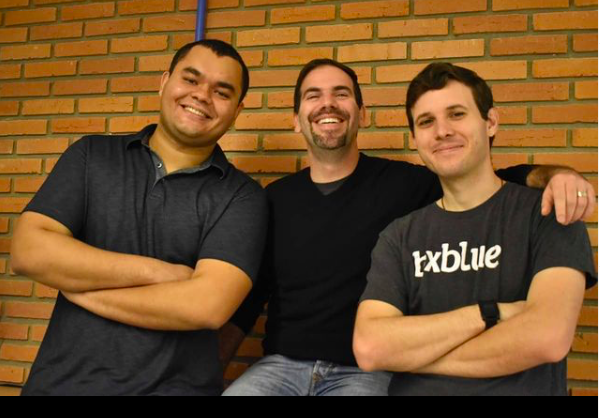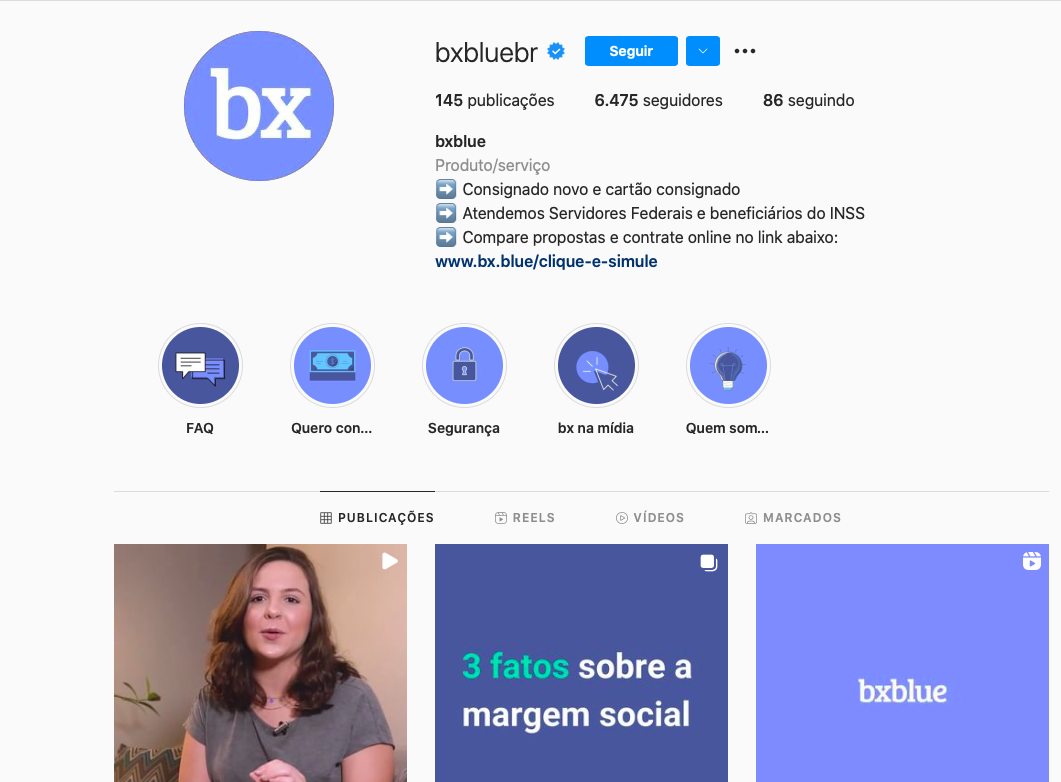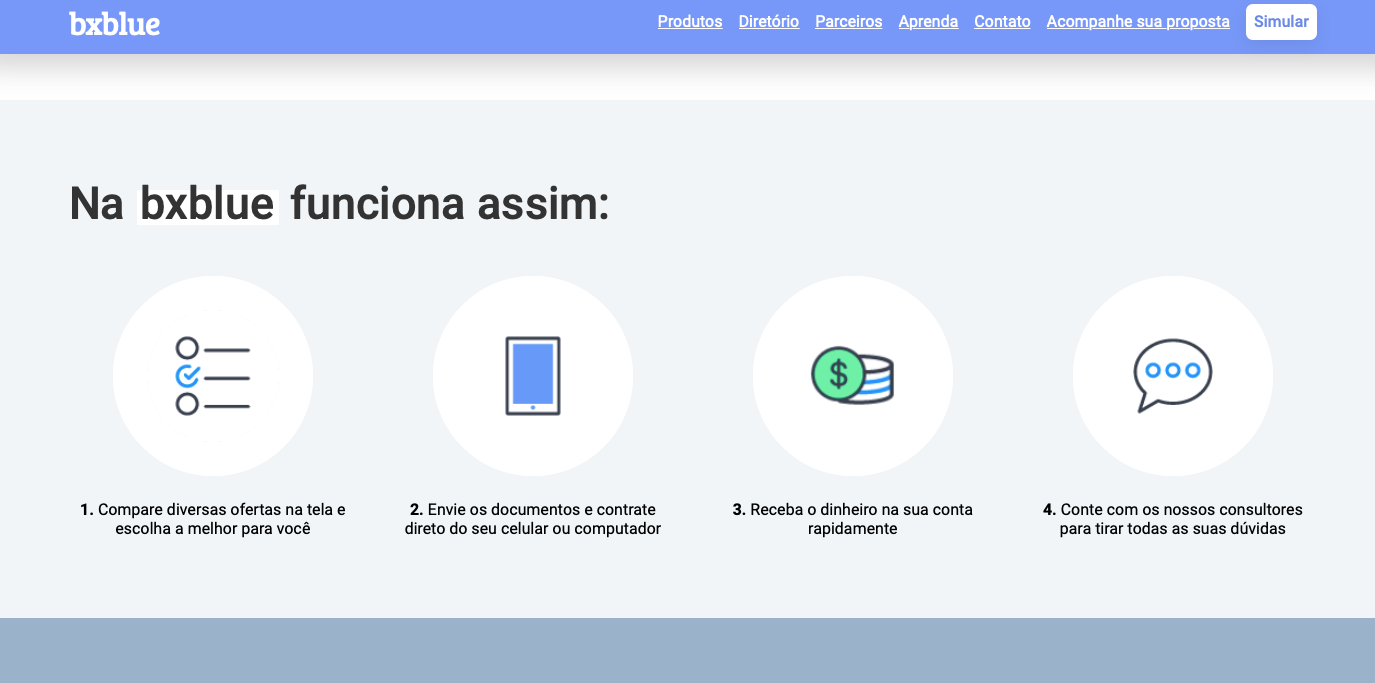BxBlue: challenges of a fintech to grow and create value for its target audience
Download available at pdf , Epub and Mobi
Case in English:

Authors : Helena Costa, Pedro Guerra Benedetti and Vitor Lauar de Mendonça
Summary
The problem situation in this case revolves around decisions that Bxblue, a fintech from Brasília that was accelerated in Silicon Valley, needs to make to create value for its target audience. After all, the company, despite having a strong technological base, seeks to serve an older audience, made up of public servants, retirees and pensioners. In this case, the student will have contact with aspects of startups, such as the principles for their growth and the acceleration process, as well as with decisions to overcome their challenges.
Who is BxBLUE? Description of the business and its product
BXBlue is a payroll loan intermediation fintech (startup that delivers financial solutions), financed in 2014 and located in Brasília. The business offers a marketplace for public servants seeking payroll loans and for financial institutions that can offer this product. They define Bxblue:
"As a banking correspondent, we follow the guidelines of the Central Bank of Brazil, under the terms of Resolution No. 3,954, of February 24, 2011. All credit assessments will be carried out in accordance with the credit policy of the Financial Institution chosen by the user. Before contracting any service through our partners, you will receive all the conditions and information about the product to be contracted, in a complete and transparent way. BX Negócios Inteligentes LTDA is a banking correspondent of the following institutions: Banco do Brasil S.A., Banco Olé Consignado SA, Banco do Estado do Rio Grande do Sul SA and Banco Cetelem SA".
BxBlue mediates the contact between two groups: banks that offer payroll loans to customers and public service workers interested in payroll loans. This is a huge market in Brazil and deserves special attention because they offer very little risk for debt repayment.
To deal with banks, BXBlue has to have time and effort, because the startup has to develop technological integration with each bank, because each financial institution has a type of system. After a financial institution shows interest in offering payroll loans on the platform, the IT squad is responsible for building the API (Application Programming Interface), which is the programming code that will allow integration between the financial institution platform and BxBlue.
BxBlue's History and Growth
The deal was initially structured by 3 partners, and one employee, and received an investment contribution from Y Combinator, a giant startup accelerator situated in Silicon Valley (California, USA) in the early stages of the company. They were accelerated because they presented 3 important aspects for impactful start-up companies:
-
Team building: BxBlue has a very strong focus on team building. Since they started their operations and started recruiting people, the startup has invested money and effort into maintaining a motivated and culturally strong organization. Not only do they believe that this is important, but they believe that it is critical to the success of the business. They also have people with different and important skills for business – from technology and sales experience.
-
Market Acceptance - they have a product, which despite being well unknown in the country, is something that could benefit from technological facilitations, resulting in impacts for a large potential market in the country.
-
Scalability - This is the third and final aspect analyzed as essential of the startup. The product has great potential for growth.
Mainly because this service can help many people and they can have partnerships with many banks as well. This means that the business can still expand and grow a lot in terms of revenue and customers.
Part of its success, according to the company's CEO, is due to the hard work put in during the incubation period at Y Combinator. During this process, the initial 4 members stayed in a house in the United States, working close to 16/18 hours a day, to start building the initial BXBlue system. They were challenged in several aspects.
After this process, they had to make a 5-minute pitch to potential investors in the US to try to seek cash investment. The tricky part was that this service model is not known in the country, so they had little time to not only explain their purpose as a company, the problem they wanted to solve, but also the type of Brazilian payroll loan. Then, they had 2 weeks to seek investments with the audience, make a new pitch with other types of investors in a high-risk type of business, which is part of the startup environment.
In the end, they were able to capitalize on an investment 12x times higher than their initial valuation, which is something really rare, even for Y Combinator startups, and even more so for Brazilian companies. This entire mentoring process from Y Combinator allowed Bxblue to learn some lessons, as its CEO Gustavo Gorenstein shares:
-
Focus on the user
-
Don't be an idiot. Success has a lot to do with luck.
-
Have a team, great market and show traction
-
There's a lot of money out there, just be ready for it
-
Grow, grow, grow.
These lessons helped them come back with a clear plan to work with and a great deal of confidence along with a young and focused team. With the money they were able to raise, they began to operationalize the service and operate the solution. At the moment when they build better processes, as much as they increase their knowledge about their market and the possibilities they had to deal with the peculiarities of the business model. They needed to respond fast to keep growing as expected.
Currently, the company has 21 employees divided into 4 areas: marketing, sales, technology and financial operations. They have partnerships with some major financial institutions, and they are steadily growing in regular customers. Its conversion rate is at 11%.
In this way, they faced other challenges that added to the learning process. One of the most difficult moments was in 2018, when the company had to resize the team. This, according to the CEO, was the worst moment the company has gone through since it started its operation.
BxBlue's target market and its challenges
BxBlue is immersed in a context of many paradigm shifts. As stated above, its product is aimed at public servants who are still at work or who are retired. Basically, they deal with seniors who have different uses of the internet when compared to younger generations. Since Bxblue is a technology-based company and its service is only available on online platforms, some questions arise: how do seniors use the internet? Are they really connected and open to this service? Isn't BxBlue entering a market that goes against trends in older people's behavior?
According to a survey conducted by the Pew Research Center, in 2016, 70% of seniors (people over the age of 65) in the U.S. are now online. In addition, older people like technology, as 58% of them believe that the internet has had a positive impact on society and three-quarters of the internet using seniors go live daily. It is also known that, in the future, technology will play a huge role in attention and health issues when it comes to the elderly, since the number of elderly people will be increasing a lot and there will not be enough people to take care of them. All of this indicates that seniors are indeed getting closer and closer to technology, and that their idea of selling their product on the internet may be a wise choice.
However, there are some drawbacks as well. Seniors face some aging-related problems, such as declining visual clarity and color vision, hearing loss, and hand-eye coordination. They also refer to technology and the fear of making some mistakes. These are all problems that have a common thread about the solution, and it's related to making the experience of older people more engaging and understandable.
In short, according to Knowles & Hanson (2018), it is possible to say that older people when dealing with technology have some characteristics:
- They are afraid of making mistakes
- Are skeptical of online financial transactions
- Are apprehensive about the lack of clarity in instructions and support
- They see online tools as arduous and time-consuming
- Are willing to engage in social interactions
What the elderly need:
- Technology with a human touch
- safety
- Clear support and instructions
- User-friendly interfaces: language, fewer options
- Simple, guided and predictable processes
- Social and in-person interactions
- Sense of community
All of these points seem to be aspects that Bxblue needs to address in order to create value for its target market. The company needs to balance a technology-based financial product with a customer who is not used to using and relying on an online platform. BXBlue's biggest challenge is to build a path in an untapped market that offers some risks and that could be really lucrative, since they are the pioneers.
Discussion Questions
-
What are the main challenges that BXBlue faces in balancing the company's scaling and creating value for its target market?
-
Suggest actions BXBlue could take to overcome potential resistance from seniors to the brand and product.
References
[ https://www.pewinternet.org/2017/05/17/technology-use-among-seniors/ ]
[ https://www.sciencedaily.com/releases/2018/03/180312091715.htm ]
[ https://www.weforum.org/agenda/2019/07/no-longer-just-for-the-young-70-of-seniors-are-now-online/ ]
[ http://www.hsj.gr/medicine/the-use-of-technology-by-the-elderly.php?aid=3614 ]
[ https://psychcentral.com/blog/how-technology-can-empower-the-elderly/ ]
[ https://edition.cnn.com/2019/01/18/tech/technology-elderly/index.html ]
About The Authors
Pedro Guerra Benedetti is a Business Administration student at the University of Brasília and a member of the ADM Casoteca Team. pedroguerrabenedetti@gmail.com
Helena Araújo Costa is an Associate Professor II at the Department of Administration (ADM/FACE) at the University of Brasília (UnB). She is the coordinator of the ADM Casoteca. She teaches Contemporary Topics in ADM 1 and 2, and Introduction to ADM at UnB. Email: helenacosta@unb.br
Vitor Lauar de Mendonça was a student of Chemical Engineering at UnB and today works with a focus on learning in the world of data related to entrepreneurship. Email: vitorlauarmendonca@gmail.com
Thanks
We are immensely grateful to Bxblue, especially Gustavo Gorenstein and Tatyanna Cruz, for their usual partnership in receiving students for internships, technical visits, offering lectures and being in the classroom to share knowledge. This case was written from data collected in 2018.
This case was written based on information made available by the company, available in the media and/or based on other references cited. It is not the authors' intention to evaluate or judge the company in question. This text is intended exclusively for academic study and discussion, and its use or reproduction in any other form is prohibited. Copyright infringement will subject the offender to the penalties of Law No. 9,610/1998 ↩︎
Gallery





